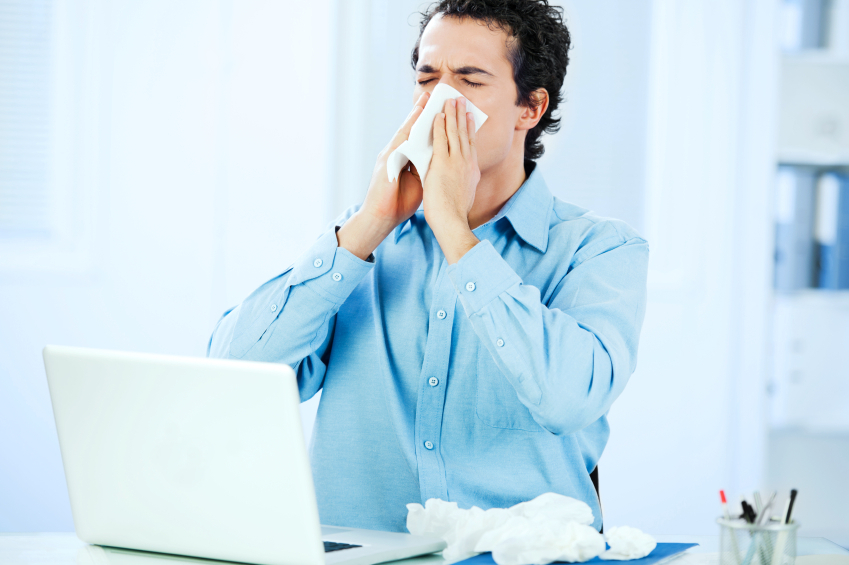Each year businesses across the country face the issue of colds and flu in the workplace. Both of these illnesses are highly contagious and easily spread in an office environment. The flu can spread to others up to about six feet away according to the Centers for Disease Control and Prevention (CDC). Additionally, employees can also get the flu by touching a surface or shared workplace objects such as telephones, copy machines, elevator buttons and door handles.
The spread of cold and flu viruses can have a devastating effect on productivity due to employee absences and sluggishness if they do come into work. In addition, employees may spread the viruses to other employees, continuing the cycle of diminished productivity. In fact, according to a study by the Conference Board of Canada, absenteeism costs the Canadian economy more than $16 billion a year. The average Canadian worker was absent for 9.3 days in 20111
According to the CDC, we are in for a similar year in terms of flu strains to last year, with the peak of flu season happening in January and February. So, the time is now to implement a healthy office program in your workplace. Healthy Office programs can slow the spread of colds and flu, and can also improve the bottom line. A study published in the September issue of the Journal of Occupational and Environmental Medicine (JOEM) stated that, “companies that build a culture of health by focusing on the well-being and safety of their workforce may yield greater value for their investors.”
What is a healthy office program?
Other than sick employees staying at home, one of the most important things you can emphasize in your workplace to avoid the spread of colds and the flu is hand washing. Washing with soap and water for at least 20 seconds may help to prevent illness. Also having a handy supply of alcohol-based hand sanitizer through out the office may help as well. According to statistics, using hand sanitizer can reduce sick days by 21%.
While it is difficult to monitor employee hygiene habits, it is therefore essential to clean and sanitize commonly touched surfaces regularly. Viruses on high touch surfaces and on shared objects such as telephones, door handles and sink faucets can spread rapidly.
While restrooms seem to have the worst reputation for germs, there are many other places in the workplace that are even worse. In fact, break rooms tend to have more germs. Sinks and microwave handles are the dirtiest surfaces and are touched by employees on a daily basis.
Other high touch areas include handrails, door handles, elevator buttons, telephones, keyboards and conference tables. These are all perfect for transmitting unwanted germs. Many people touch these surfaces and transfer germs without ever knowing it. Germs can live on a surface for up to 48 hours, so it is important to wipe surfaces daily.
A recent study by Dr. Charles Gerba of the University of Arizona for The Healthy Workplace Project found that implementing the program’s “wash, wipe, sanitize” protocol in the workplace reduces the probability of catching the flu or common cold by 80%. It can also reduce the number of surfaces contaminated by viruses by 62%.
Some other considerations for reducing germs in the workplace is to regularly, empty waste baskets, as items such as tissues will still hold flu virus. It is also important to vacuum carpet regularly and deep cleaning at least twice during the flu season. This will not only reduce germs, but will improve your indoor air quality.
Another breeding ground for germs is office chairs and fabric panels. These items should be deep cleaned and protected with anti-bacterial fabric protectors.
A professional office cleaning company can help you develop a healthy office program that works best for your workplace and keep your employees healthy this flu season.
1 The latest year for which figures are available.
